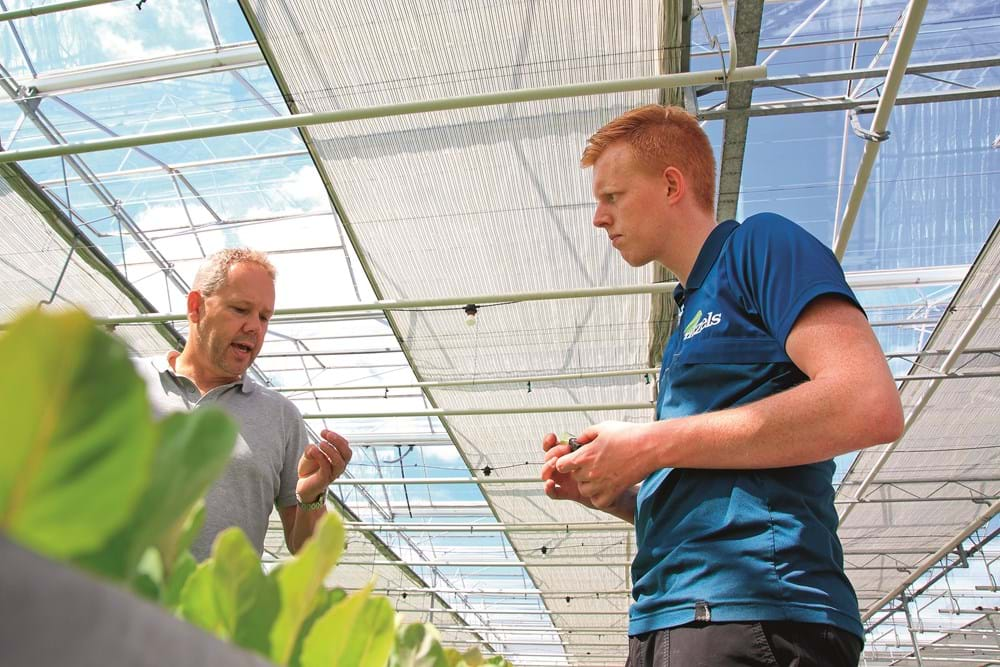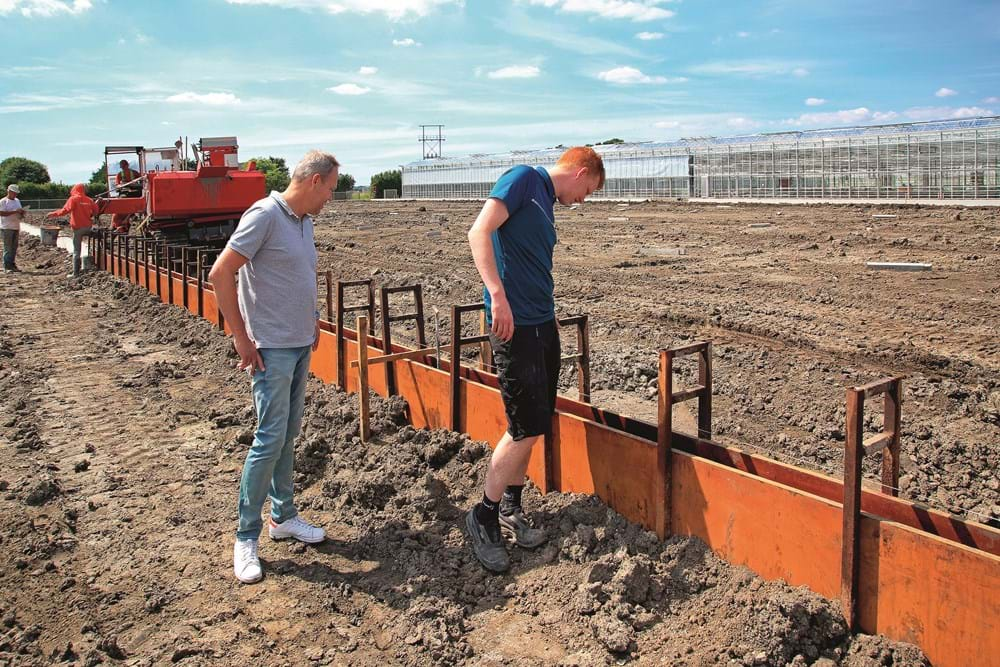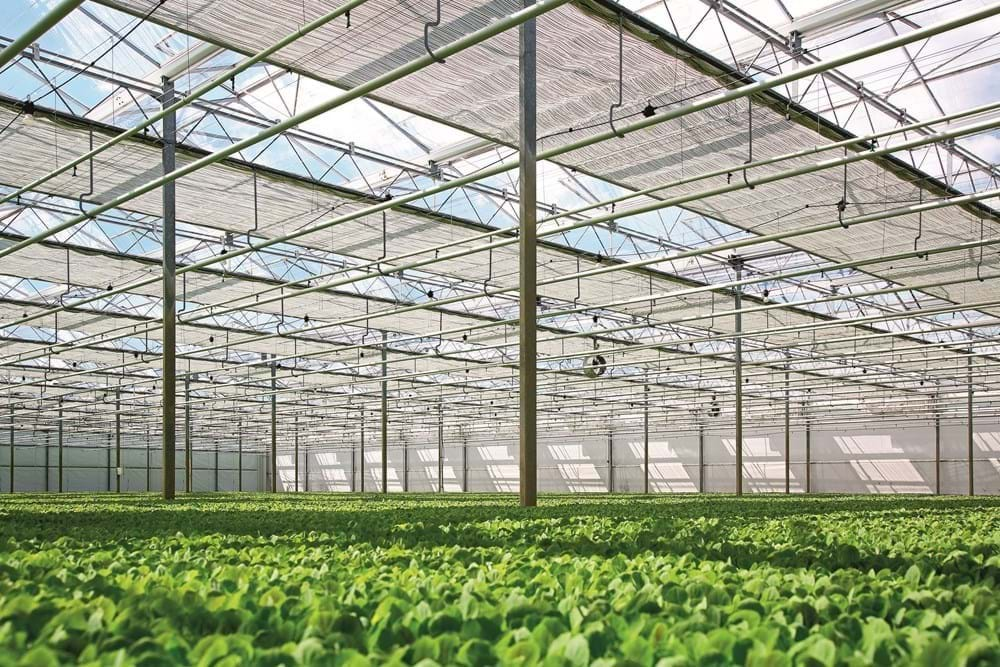At Gitzels plant nursery, innovation and efficiency are of paramount importance. The nursery strives to produce constant and stable plant material for outdoor vegetable growers and propagation services for seed and breeding companies. Gitzels is building a new greenhouse with even more attention to light and climate to produce even better plant material. They chose Svensson's PARperfect screen solution for this purpose.

At Gitzels, they are always looking for improvements and new developments. That's in the company's DNA, says Mike Gitzels, responsible for Innovation & Development at the nursery in Wervershoof. Together with growers and suppliers, they work hard on issues concerning greenhouse climate, biostimulants, fertilization, organic cultivation, and crop protection. Since 2016, Matthijs Woestenburg (R&D) has been part of the Gitzels team. His daily focus is on the most critical question: how can we do it just a little bit better, says Mike. "By focusing on research and development, we want to improve plant quality. We started with the organic cultivation of outdoor vegetables (cabbage plants) and learned a lot about climate and working with screens. We want to take that knowledge and develop it further in our new greenhouse."
Playing with screens
The new 2.8 ha greenhouse is rising behind the 7.5 ha existing company in Wervershoof. Gitzels also has a 2 ha greenhouse in Hem, but these stands will be demolished at the end of the year, and the freed-up acres will be set up as habitat for meadow birds. In the new greenhouse, 6000 m2 will be fully equipped for bio-farming. The rest of the greenhouse will be supplied to prepare the departments for bio-cultivation. The greenhouse will be fully equipped with Svensson's PARperfect screen solution.
"We chose to furnish the entire greenhouse with double screens," explains Mike. "PARperfect's high diffusivity ensures that the natural light is distributed evenly to the plants. By closing the upper climate screen more or less, the crop always receives the right irradiation. Cabbage is a 'cold' crop; PARperfect is ideal for crops that need protection from the bright summer sun. We want to play more with that in this greenhouse." Gitzels has a single screen hanging in the existing greenhouse in Wervershoof, which is used primarily to prevent energy radiation and control temperature. Sensors are used to watch how small plants develop. There are a lot of small plants in the greenhouse, 950 on a square meter, Mike says. "The microclimate in the greenhouse is therefore very important. Previously, we looked at the ambient temperature of the greenhouse and stoked the temperature accordingly. However, we have noticed that the plant temperature experiences are very different. The challenge is to keep the plant going day and night. We have learned that by playing with screen cloth, we also manage to keep the plant active at night. This results in heavier plants. We want to find an optimum in that."
Optimal light consumption
The plant nursery aims to deliver plants that continue to use the greenhouses as effectively as possible. Cabbage breeding peaks in April, when everyone wants their headed cabbage plants. Crops such as cauliflower pointed cabbage and broccoli are grown more widely throughout the season by field vegetable growers. That means a lot of young plants in the greenhouse in the summer get more irradiation, Mike says. "By playing with screens, we want to find out how much light a plant can absorb. With the PARperfect screen solution, we want to determine the optimal light consumption of the plant per period with optimal watering. All this is to produce more constant and stable plant material so we can supply our customers with plants that grow even better."

Gradual control of screen level
PARperfect is Svensson's new screen solution, says advisor Bart Bakker of Svensson. With PARperfect, the screen level in the greenhouse can be controlled gradually, from 20% to 100%, just like a light dimmer, he explains. A combination of at least two screens is assumed. The bottom screen is the Harmony PARperfect climate screen. "The position of the screens is continuously adjusted based on the intensity of the sun's rays. This keeps the light level at the crop constant, regardless of the season or time of day. Thanks to the very high diffusivity of the PARperfect climate screen, light distribution at the crop level is optimal. Every plant receives the same amount of light."
According to Bart Bakker, PARperfect offers several advantages: every plant gets the right light level under all conditions, and a higher PAR sum of natural light is possible. Direct sunlight on the crop is excluded, preventing crop damage. The consultant says that this can result in more uniformity, crop acceleration, better production quality, and fewer hours of assimilation lighting, and thus lower costs. "What we want to achieve in Gitzels' greenhouse is that the plant grows optimally at a certain light sum. You're going to mimic that without forcing it." Mike Gitzels continues: "We expect that with PARperfect, it will be even easier to ensure the consistent quality of the plant material and to grow a heavier young plant. Uniformity increases through diffusion, and we can optimize the balance in the greenhouse. In the new greenhouse, we want to focus on light, moisture, and energy and look for the optimal conditions for the plant. You learn to understand the plant better by measuring at plant level."
With PARperfect, light level differences are a thing of the past.
Fully automated planting
Gitzels plant nursery sees several challenges for the coming years, in which the new greenhouse can play a role. Gitzels considers the task of providing the customer with the best possible service in terms of plant material. "Growers want a healthy, stable, sturdy plant in good growth. We see, for example, that the development of fully automatic planting in the field is on the rise: about 20% of our plants are already planted by fully automatic planting machines. The grower prefers to have a uniform plant of 12-15 cm. Not an inch longer; otherwise, it will stick." In addition, the nursery will integrate the good facets of organic growth into conventional growing, such as substrate, fertilizers, and biology. Finally, Gitzels is working on a platform for local plant breeders to gather and exchange knowledge. "We have found much less research on outdoor vegetable crops, especially in cabbage crops. By sharing knowledge and experiences, we hope to accelerate innovations and developments."
